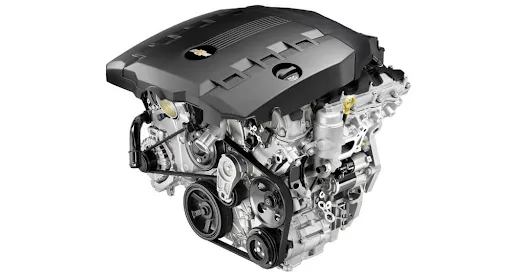Vital Factors To Consider for Ensuring Top Quality and Long Life in Made Use Of Engines
When thinking about the purchase of a used engine, guaranteeing its top quality and long life needs a diverse strategy. Maintenance background is a pivotal variable, as it supplies insight right into the engine's past treatment and possible future integrity. Beyond documents, a comprehensive inspection of physical parts-- such as belts, hoses, and seals-- can disclose hidden concerns. Performance screening is also essential, providing a photo of the engine's operational effectiveness. Comprehending the nuances of these analyses and their implications can be intricate. What are the key methods that can be used to browse this intricate analysis process effectively?
Engine Background Evaluation
In the world of used engines, a thorough engine background evaluation is critical to making sure quality and dependability. Recognizing an engine's past can offer important understandings into its efficiency abilities and prospective future durability.
Furthermore, evaluating any type of background of repair work or substitutes is essential. Engines that have undertaken substantial repairs might have underlying issues that might resurface. Comprehending the context of such fixings, whether because of making defects or proprietor oversight, is essential in creating a thorough analysis. Checking out the engine's mileage can serve as an indication of wear and tear. Reduced gas mileage engines are typically preferred, but it is also vital to consider how those miles were collected. An engine utilized largely for long-distance highway driving might be in better condition than one subjected to frequent stop-and-go city web traffic.
Essentially, an extensive examination into an engine's background is important for making enlightened buying choices. used engines for sale.
Comprehensive Evaluation Overview
While recognizing an engine's background gives important context, an extensive examination is the next action to ensure its existing problem lines up with historic data. The examination must begin with a visual analysis, checking for indicators of leaks, rust, and unusual wear. Evaluate the exterior for oil spots or coolant marks, which may indicate underlying concerns.
Following, review the engine's installing system for any kind of loose bolts or irregularities that could impact performance. Pay close attention to the condition of belts and hoses, as these parts are important for optimal engine capability. Analyze for cracks, fraying, or any kind of indicators of wear and tear.

Determining Deterioration
Identifying signs of wear and tear is essential for assessing an utilized engine's long life and integrity. It entails a thorough evaluation of different engine components to establish their current state and prospective future efficiency.
One more vital facet is checking the engine's seals and gaskets. In addition, unusual noises during engine procedure, such as knocking important site or ticking sounds, might indicate interior damage or excessive wear on moving parts like pistons or bearings.
The condition of belts and hoses is just as vital, as they play a crucial function in the engine's overall function. Broken or torn belts and brittle hoses are indicators of maturing that can cause engine failure if ignored. Checking out the oil problem and filter can give insights into previous upkeep methods, as dirty oil or clogged up filters recommend forget and increased wear.
Performance Testing Essentials
Reviewing the wear and tear of engine elements sets the phase for a thorough evaluation through performance screening. Performance screening serves as an important action in figuring out the operational honesty of a made use of engine.
Making use of dynamometers is a common approach in efficiency screening. These devices determine the engine's output across different problems, using a detailed profile of its capability. In addition, on-road screening complements dynamometer evaluations by observing engine behavior under common driving circumstances, guaranteeing it satisfies the required requirements for both safety and efficiency.
Advanced diagnostic tools further enhance the capability to determine underlying problems. These tools examine engine administration systems, determining faults in electronic components that could impact efficiency. Comprehensive testing not just verifies the engine's functional status yet additionally help in forecasting future upkeep demands. This guarantees the utilized engine can supply trusted efficiency over an extensive duration, hence maximizing its value and service life.
Upkeep and Treatment Tips
Correct upkeep and care are vital to extending the life-span of a made use of engine and ensuring its regular performance. Regular oil changes are critical; utilizing the producer's suggested oil type and quality can protect against too much damage. Furthermore, oil filters need to be replaced simultaneously to preserve optimum lubrication and tidiness within the engine.
Checking liquid go to this website levels, including coolant, transmission fluid, and brake liquid, is necessary. Making certain these other liquids go to ideal levels helps protect against getting too hot and various other mechanical problems. Checking belts and pipes for signs of wear, such as splits or fraying, can prevent potential failures that might result in pricey repair work.
Regular inspection of the air filter is likewise necessary, as a tidy filter makes sure efficient airflow and burning, thus maximizing engine performance. Ignition system ought to be checked and replaced when required to keep efficient gas combustion and avoid engine misfires.
Last but not least, routine diagnostic checks using specialist tools can determine potential issues before they come to be considerable problems. By sticking to these upkeep and care pointers, made use of engine owners can guarantee their engines stay reputable, reliable, and with the ability of performing well over a prolonged duration.
Conclusion
